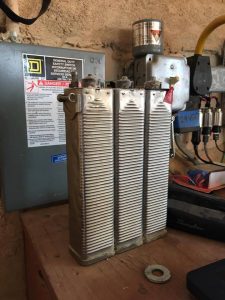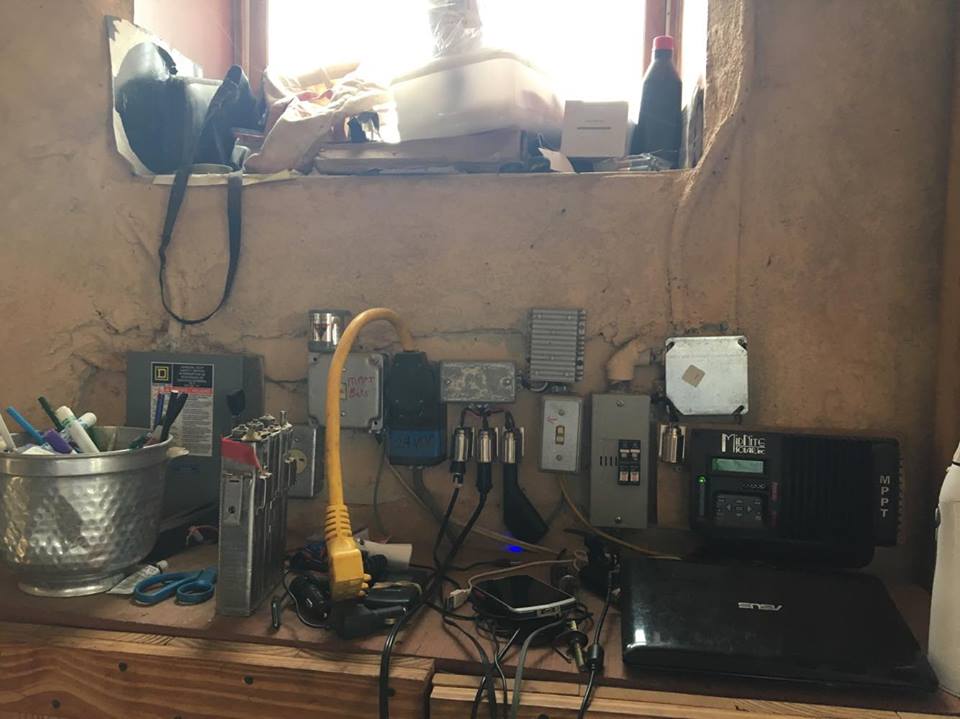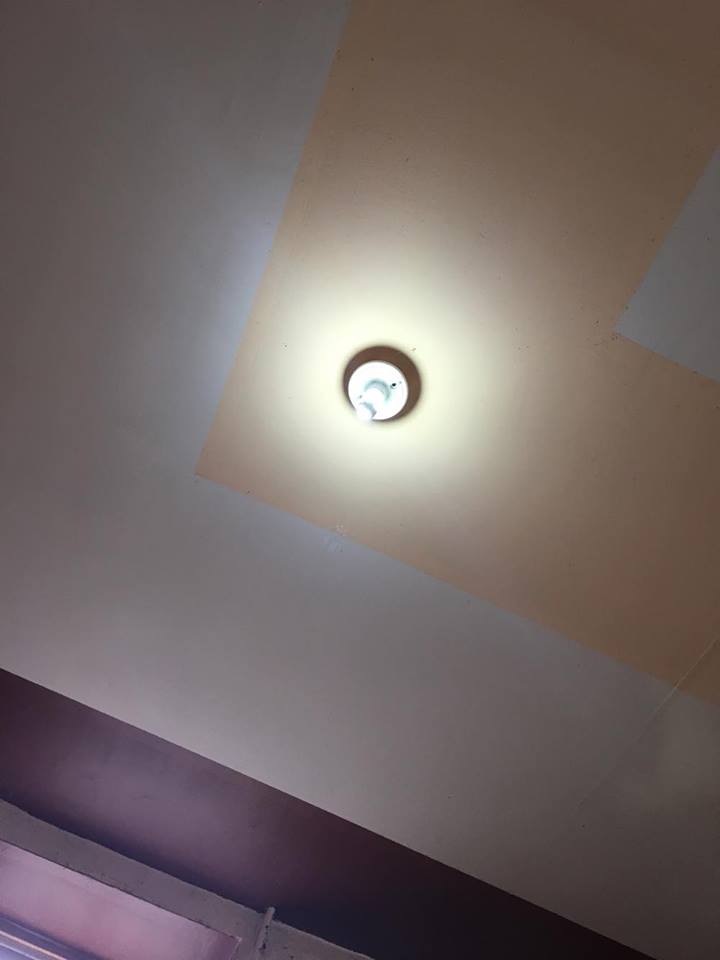
Original Edison Nickel-Iron Battery.
D.C. Nickel-iron batteries were invented by Thomas Edison in 1901. Expensive and large, these durable batteries were eventually replaced in the mainstream American economy by lithium-metal batteries, which could store more energy in a smaller amount of physical space. The industry also began to favor A.C. electrical current over D.C. for its ability to travel long distances through electrical lines.
For LEF, the benefit of Ni-Fe batteries is their longevity. They are the only batteries that don’t degrade with each charge cycle. The original Edison Ni-Fe pictured here still works!

Ten Nickel-Iron Batteries.
LEF owns a small bank of ten 100 amp hour Ni-Fe batteries for lighting and charging electronics. These modern Ni-Fe batteries were purchased from Iron Edison, a company based in Denver, CO.
With the charging power of a 260 watt photovoltaic panel, these ten batteries keep the lights on year-round. The D.C. current produced by these batteries is controlled by a voltage regulator. Because D.C. current is tolerant of voltage variation (as opposed to A.C. current’s steady stream), the lights are merely a little bit dimmer when a cloudy spell has left the batteries at a low charge. This makes D.C. current optimal for solar energy systems.

LEF’s D.C. Powered Charging Station.

L.E.D. Lights.